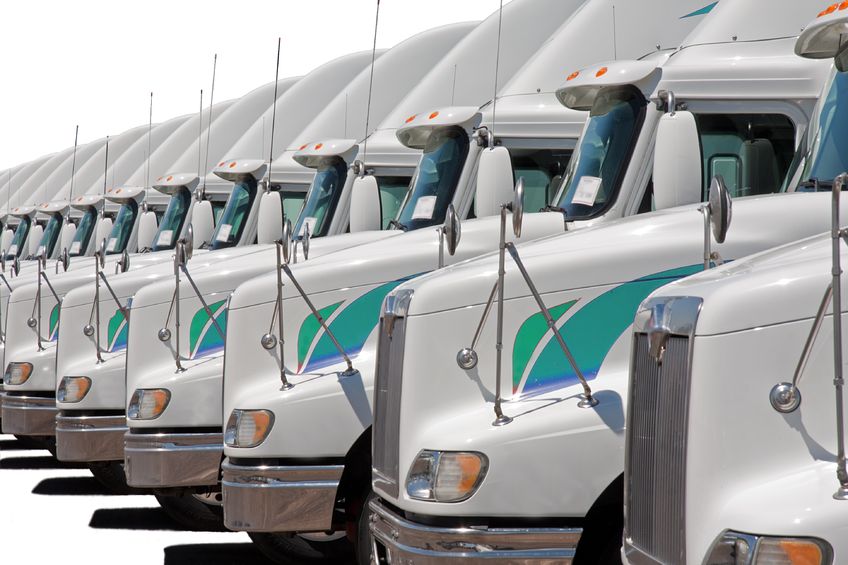Consortium/TPA Services
TeamCME members can drastically increase their profit margins by offering randomized DOT drug and alcohol testing to CDL drivers utilizing the resources we provide.
- TeamCME is your trusted partner for randomized drug and alcohol testing services
- Our model is designed to maximize profitability and provide support
Content
Random Drug & Alcohol Tests are Required for Most CMV Drivers
The Federal Motor Carrier Safety Administration (FMCSA), part of the Department of Transportation (DOT), mandates that Commercial Motor Vehicle (CMV) drivers undergo random drug and alcohol testing. Companies employing CMV drivers, including owner-operators, are responsible for managing these testing programs to ensure compliance. To simplify the compliance process, many trucking companies hire a Consortium/Third-Party Administrator (C/TPA) to set up and supervise a randomized testing program.
A Large and Growing Market
As truck driving is one of the most common occupations in the United States, the demand for these services is substantial. According to the Bureau of Labor Statistics, There were over 2.2 Million CMV drivers in 2023. This creates a significant demand for reliable and efficient drug and alcohol testing consortiums. By partnering with TeamCME, you position yourself to capitalize on this market and unlock new revenue opportunities.
How Much Revenue Can Come from Offering Consortium Services?
Offering a full suite of DOT medical services enhances driver convenience and retention, while substantially increasing your income. The table below demonstrates how providers can grow their profit margins by 6- 7x when offering these essential services.
Exam-Only Annual Revenue
| DOT Physical ($100 every 2 years) | $50 |
All Services Annual Revenue
| DOT Physical ($100 every 2 years) | $50 |
| Consortium Setup Fee (once) | |
The Traditional Model and Its Limitations
Traditional consortium models have allowed large national entities to monopolize the business, effectively turning small businesses and private practice clinics into subcontractors with limited control and profit potential. This results in the following:
Restricted Decision-Making
- OPERATIONS:
Traditional consortiums dictate how and when the collections are conducted, impacting clinic efficiency, patient experience, and overall operations.
- DRIVER RELATIONSHIPS:
Drivers are often directed to the consortium’s preferred collection sites, possibly resulting in drivers switching their DOT physical provider for the sake of convenience.
Financial Disadvantage
- PRICING:
Traditional consortiums set fees and reimbursements, often leaving you with a minimal collection fee.
- UNFAIR DISTRIBUTION OF PROFITS
The traditional consortium/TPA captures most of the income, disproportionately allocating the revenue to the providers.
-
- Due to limited resources (experience, time, or capital), many businesses accept this arrangement rather than establish their own consortium.
The TeamCME Model: A Consortium Designed for You
TeamCME offers a refreshing alternative to the traditional model. With our model, whether you are a medical examiner or a small business, you can effectively become a consortium/TPA while we handle all back-office work. Here’s how we empower you:
Full Decision-Making
- OPERATIONS:
You control how collections are conducted, ensuring efficiency, a superior patient experience, and seamless clinic operations.
- DRIVER RELATIONSHIPS:
You maintain and strengthen relationships with drivers or clients by offering comprehensive services (DOT physicals, random drug and alcohol testing) all in one place. This convenience reduces the likelihood of drivers going elsewhere.
Financial Advantage
- PRICING:
You set your fees. Our back-office service fee remains fixed, regardless of what you charge.
- YOU KEEP THE PROFITS
TeamCME has a small fee to provide the resources you need to compete. There is no allocation of revenue.
How to Start Offering Consortium Services
- Contact TeamCME to discuss your specific needs and goals
- Determine the fees you want to charge for your services
- Decide how you want to conduct collections and manage your clinic workflow
- Utilize TeamCME’s tools and back-office support to ensure a seamless start
- Start providing comprehensive DOT medical services to your drivers
Frequently Asked Questions
What is a drug and alcohol consortium?
A drug and alcohol consortium is a group of employees from many different companies, including owner-operators, who are subject to random drug and alcohol testing. The DOT and US Coast Guard require most drivers and companies to be in a consortium.
Who needs to be in a consortium?
Use this quiz to discover whether an individual must be in a program.
How do I start offering a consortium through TeamCME?
- You or an employee must be a certified DOT Urine Specimen Collector. Need to become certified? Click “Get Certified”.
- Request a TeamCME lab account, if not already assigned one.
- Go to the TeamCME Member Center (login required) and download our marketing posters found under the Consortium section. Post them in a conspicuous place in your office or add them to your intake forms.
- Add companies and drivers using the Company Setup Form. For additional help and questions, call (541) 276-6032.
Do I need any equipment to offer drug and alcohol consortium services through TeamCME?
Order Drug Testing Supplies
For alcohol testing, you may use a breathalyzer which has a higher upfront cost, or you may purchase inexpensive saliva strips.
In either case, you will need to purchase DOT alcohol forms. You can purchase them in our store. They are discounted for TeamCME members.
What is my cost to set up consortium companies through TeamCME?
How much should I charge a company for each setup?
Whatever you like! We recommend you gather competitor pricing information and price accordingly.
Typically, TeamCME members can charge at least twice the amount of what the member is being charged by TeamCME.
How often are the random selections?
Random selections and testing are performed quarterly and spread equally throughout the year.
Companies can require additional testing if it is in their drug and alcohol testing policy.
How are individuals selected for testing?
Everyone in the pool must have an equal chance of being selected and tested in each selection period. TeamCME uses sophisticated computer-based random selection software.
What are the required testing percentages?
I submitted a company to the consortium. What happens now?
Once we process your submission, you will receive two emails- one with an eligible donors list attached, and another with the enrollment certificate. Forward both attachments to the company or owner-operator.
If the company sends you any employment updates, changes, or has any testing done with you, send the information to us.
Wait for the next draw for selection and notify the company of any employees that need to report for a test.
How are individuals notified to report for a test?
An email notification will be sent to your office. You then relay that information to the company’s Designated Employer Representative (DER). It is particularly important the DER is not eligible for testing.
The driver chosen for testing should not receive advanced notice of the selection. Once notified, the driver must report immediately to your office or another collection facility.
If the DER is eligible for testing (owner-operator situations), and selected for testing, we recommend having the DER report to your office and then informing them they were selected for testing. Then immediately proceed with the collection.
When should an employee be notified to report for a test?
An individual should be notified during one of three time periods:
- While they are on their way to work,
- While they are at work, or
- When they are just getting off work.
We recommend notifying an employee while they are at work and able to report to your office or another collection site.
What must employees do when notified of a random test?
When an employee is notified of being selected for testing, they must proceed immediately to the collection site (your office).
If an employee is notified of a random selection while working “off-site” or “on the road,” the company’s policies should dictate what the employee must do before resuming safety-sensitive functions.
You should also have written procedures for owner-operators regarding when to notify the driver to report to a specific collection site.
What if the selected person isn’t available for testing?
If a selected person is unavailable during the selection cycle for a legitimate reason such as an extended absence or long-term illness, document the reason. Then make another selection or make an extra selection during the next selection cycle.
If an employee is notified on their day off, they should still report to a collection facility to complete the drug test.
If a person is selected for testing but has not received notice since it is their day off, test the person during their next shift.
Why are some people randomly tested more than once?
In a truly random selection process, a high probability exists that some employees will be selected several times while others may never be selected. After each selection, the employee’s name is returned to the same pool, and he or she becomes just as likely as anyone else to be selected next time.
Can a company have their own testing pool?
Yes, if the company has eight DOT safety-sensitive employees which includes truck drivers.
Does an employee working for more than one DOT Agency mode need to be in multiple pools?
If the employee is 50% one mode and 50% another, the driver must meet the requirements of the pool that requires the higher testing percentage. An employee who drives a CMV 50% of the time and handles hazardous material the other 50% of the time would need to meet the FMCSA-required random rates of 50% drug testing and 10% alcohol testing, even when PHMSA prohibits random alcohol testing and only requires 25% random drug testing.
Have another question we didn’t answer?
Send an email to [email protected]
Ready to Take Control of Your Consortium Services?
Contact us today to learn how TeamCME can become your trusted partner for DOT drug testing, DOT alcohol testing, and consortium services. Our consortium model is designed to maximize your profitability while providing the support you need to thrive.







